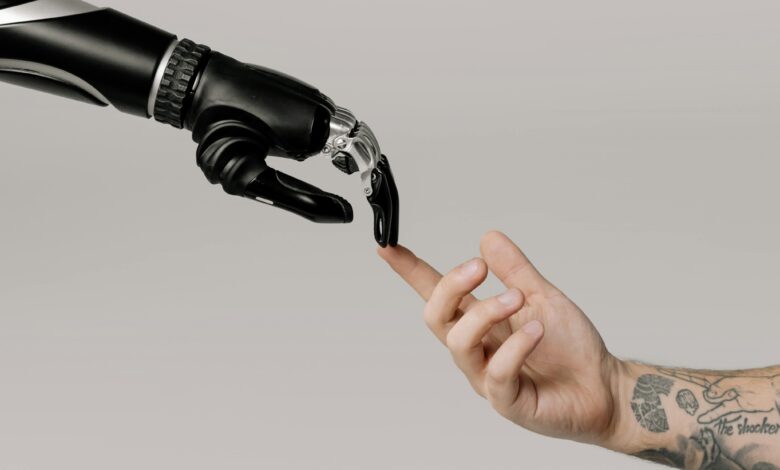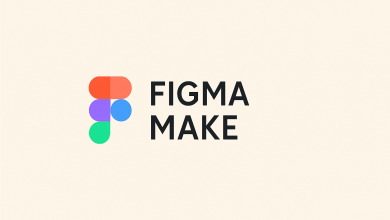
As AI moves from hype to implementation, businesses must fundamentally rethink what it means to build high-performing teams, because the next colleague might not be human.
The traditional workplace isn’t vanishing in the face of technology. But it is being transformed, rapidly and quietly, by something just as powerful: artificial intelligence (AI). And increasingly, AI is joining teams not as a background tool, but as an integrated digital colleague, supporting workflows, solving problems, and redefining what modern work looks like.
At the same time, traditional workforce structures are being dismantled in favor of more agile, blended models that integrate full-time employees, flexible specialist contractors, external partners, and now, AI-powered digital agents. According to Guidant Global’s latest research, conducted in partnership with Raconteur, one-third of organizations have reduced permanent headcount over the past year. More than 80% increased their use of specialist contractors, and 90% plan to further scale contingent capabilities in the next 18 months.
This shift demands a new operating model that’s designed, governed, and led with the same precision as any business-critical transformation.
AI is here to help, not replace
The anxiety around job displacement is understandable. But AI is augmenting the workforce, not replacing it. Digital agents are now used to automate repetitive tasks, accelerate data processing, and improve decision-making across key areas, from customer support to legal review to HR operations.
Today, AI tools are widely embedded across talent functions: 88% of organizations use HR chatbots, 78% rely on AI for skills gap analysis and learning recommendations, 73% apply it to resume analysis and job matching, and 71% leverage it for recruitment and candidate screening. These applications are saving time and improving quality at scale.
Importantly, AI frees up human workers to focus on higher-value activities, creative problem solving, leadership, relationship building, and strategic decision-making. When deployed effectively, AI doesn’t erode human potential. It elevates it. Yet, this transformation requires companies’ deliberate investment in upskilling programs which prep employees with the essential skills they need for new and evolving roles that increased AI adoption and team ‘resource’ brings. Upskilling employees to ensure they can effectively harness and collaborate with AI agents is imperative to AI’s successful integration into existing workforce models.
It’s no secret that AI is a cost-saving addition to businesses as well as demonstrably increasing efficiency, where activities would have been too time-consuming or labor-intensive for real-life workers. However, organizations that view AI not only as a tool but as a team member are already reporting faster delivery timelines, improved accuracy, and higher productivity. But sustaining those gains requires an intentional strategy that goes beyond implementation; it requires a total mindset shift.
Leading hybrid teams: A new skillset for managers
As AI agents begin contributing at a level comparable to full-time employees, the role of leadership must evolve. Team leaders need to understand how to plan, train and manage hybrid teams that combine human and digital talent. That means overseeing team structures, allocating budgets, updating L&D strategies, forecasting workloads, and calculating headcount with the capacity of AI agents factored in.
Far from threatening leadership roles, this shift offers an opportunity to future-proof managerial skillsets. Managing AI colleagues requires fluency in technical capabilities, an understanding of AI’s limits, and the judgment to decide when, and how, human expertise must guide machine performance.
As AI plays a larger role in team delivery, leaders must be equipped to evaluate their contribution, assess outcomes, and continuously adapt team design. It’s not about replacing human oversight; it’s about enhancing it.
Due diligence for digital workers
AI should not be implemented without scrutiny. Just as HR and procurement teams apply rigorous processes to assess and onboard human workers, the same diligence must apply to digital colleagues.
Is the AI system solving a defined problem or skill gap? Does it integrate seamlessly with current systems and workflows? Can it enhance, not complicate, team performance? Every AI tool should be evaluated for effectiveness, adaptability, and long-term value.
This also means piloting first. Leaders should identify targeted use cases, test AI in real-world scenarios, gather team feedback, and iterate before scaling. Just as you wouldn’t hire a specialist without references, AI tools should be trialed and vetted in the same way.
Compliance, ethics and governance: The new necessities
With AI increasingly embedded in workflows, governance is no longer optional; it’s essential. Digital agents must be held to the same standards of accountability, compliance, and ethical behavior as human team members.
This is especially complex for global organizations. Governance frameworks must account for both the best global practices and region-specific regulations. The EU AI Act, for instance, imposes strict compliance requirements on high-risk AI applications, categorizing systems by risk level and mandating transparency, oversight, and safety standards. In contrast, the U.S. has no centralized federal AI regulation, leaving companies to navigate an evolving patchwork of sector-specific and state-level laws.
As a result, successful governance will depend on collaboration across legal, HR, procurement, and IT functions to ensure systems are compliant, secure, and used responsibly. This isn’t just a legal issue, it’s a workforce one.
Building resilient, future-ready teams
The integration of AI isn’t hypothetical; it’s happening now. With its impact already being felt across our global client base, we’re seeing two distinct paths emerge.
Some organizations are proactively embedding AI alongside flexible and permanent workers, using blended workforce strategies to increase agility and competitiveness. Others are hesitating, constrained by legacy models and a lack of clarity around accountability.
The difference is preparation.
AI will either widen the performance gap or close it, depending on how ready a business is to lead in this new era. In today’s market, the most in-demand technical skills are cybersecurity (54%), artificial intelligence (53%), and cloud computing (30%). And AI solutions can either exacerbate the gap or help fill it, depending on how well they are integrated and supported.
Just like any colleague, digital workers need clear goals, accountability mechanisms, and ongoing performance assessment. They also need human teammates who understand how to collaborate and leaders who know how to deploy them for maximum impact.
For any business seeking to embrace AI in their blended workforce model, the emphasis will need to be on workforce management and ensuring these additions are just that, additive. Much of the concern around AI is an eagerness to include it in every aspect of business, and whilst it can be helpful, usage should always be approached with the perspective that technology is enhancing what is already good and taking it to the next level. Workers are willing and ready to adapt to this new co-worker, but they’ll be seeking guidance and reassurance that their contributions are just as valuable. With AI advancing the creation of new roles and team structures, heightening the need for companies to invest in future-ready upskilling programs and emphasizing the importance of agile workforce models, it’s clear that working alongside AI systems has fast become the latest and trickiest balancing act for business.





